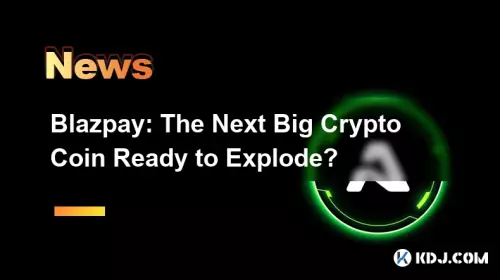 |
|
 |
|
 |
|
 |
|
 |
|
 |
|
 |
|
 |
|
 |
|
 |
|
 |
|
 |
|
 |
|
 |
|
 |
|
代幣化存款和穩定幣聽起來可能是同一件事,因為它們都是鏈上法幣。但它們實際上是不同的概念,這種差異不僅對於用例和我們對區塊鏈潛力的理解很重要,而且對於監管如何發展也很重要。

Aren’t stablecoins and tokenized deposits the same thing? Not at all, argues Noelle Acheson. It’s not just the different functionality and treatment; it’s also the different approaches to money.
穩定幣和代幣化存款不是一回事嗎?諾埃爾艾奇遜認為,根本不是。這不僅僅是功能和處理方式的不同;這也是對金錢的不同態度。
Tokenized deposits and stablecoins may sound like the same thing, given that they are both fiat-on-chain. But they are actually distinct concepts, and the difference matters not just for use cases and our understanding of blockchain potential, but also for how regulation can evolve. They also both highlight, in different ways, how our understanding of money is changing.
代幣化存款和穩定幣聽起來可能是同一件事,因為它們都是鏈上法幣。但它們實際上是不同的概念,這種差異不僅對於用例和我們對區塊鏈潛力的理解很重要,而且對於監管如何發展也很重要。它們也以不同的方式強調了我們對金錢的理解正在發生怎樣的變化。
Noelle Acheson is the former head of research at CoinDesk and Genesis Trading, and host of the CoinDesk Markets Daily podcast. This article is excerpted from her Crypto Is Macro Now newsletter, which focuses on the overlap between the shifting crypto and macro landscapes. These opinions are hers, and nothing she writes should be taken as investment advice.
Noelle Acheson 是 CoinDesk 和 Genesis Trading 的前研究主管,也是 CoinDesk Markets Daily 播客的主持人。本文摘自她的《加密貨幣現在是宏觀》時事通訊,該通訊重點關注不斷變化的加密貨幣和宏觀景觀之間的重疊。這些觀點是她的,她寫的任何內容都不應被視為投資建議。
Tokenized deposits, sometimes known as deposit tokens, are blockchain representations of fiat currency bank deposits. They are issued by banks, backed by fiat deposits at those banks, and can run on either private or public blockchains (although, since these are heavily regulated entities, they’ll want complete control of access). In some cases, such as with JPMorgan’s JPM Coin, they are used to settle transactions between JPMorgan clients. In others, such as SocGen’s EURCV, they can be transferred to clients who do not have accounts at the issuer bank, but only after being whitelisted.
代幣化存款,有時稱為存款代幣,是法定貨幣銀行存款的區塊鍊錶示。它們由銀行發行,由這些銀行的法定存款支持,並且可以在私人或公共區塊鏈上運行(儘管,由於這些是受到嚴格監管的實體,他們希望完全控制存取權限)。在某些情況下,例如摩根大通的摩根幣,它們用於結算摩根大通客戶之間的交易。在其他銀行中,例如法國興業銀行的 EURCV,它們可以轉移給在發卡銀行沒有帳戶的客戶,但只能在被列入白名單之後。
Tokenized deposits boost the efficiency of fiat by eliminating some steps in the execution of trade and settlement, while enhancing transparency and flexibility for their issuers.
代幣化存款透過消除執行交易和結算的一些步驟來提高法定貨幣的效率,同時提高發行人的透明度和靈活性。
Reserve stablecoins*, on the other hand, are blockchain tokens backed by a fiat currency. The issuer, which may or may not be a bank, promises to maintain the value of the token stable relative to the chosen fiat by allowing redemption at any time. (*Other types of “stablecoins,” such as algorithmic and yield-bearing, are different enough to be left out of this consideration for now.)
另一方面,儲備穩定幣*是由法定貨幣支持的區塊鏈代幣。發行人(可能是銀行,也可能不是銀行)承諾透過隨時允許贖回來保持代幣相對於所選法定貨幣的價值穩定。 (*其他類型的“穩定幣”,例如演算法幣和收益幣,都足夠不同,暫時不考慮。)
This may sound like a tokenized deposit, but it’s not. The stablecoin doesn’t represent the deposit, it is pegged to the fiat value via the backing reserves: a small distinction that makes a big difference.
這聽起來像是代幣化存款,但事實並非如此。穩定幣並不代表存款,它透過支持儲備與法幣價值掛鉤:微小的差異卻產生巨大的差異。
The difference is operational, conceptual and legal.
差別在於操作性、概念性和法律性。
They do different things
他們做不同的事情
On the operational side, the transfer of a deposit token from one client to another usually triggers an off-chain transfer of fiat from one account to another. The tokens represent bank deposits, so the fiat account balances in theory have to match the token account balances.
在操作方面,存款代幣從一個客戶轉移到另一個客戶通常會觸發法幣從一個帳戶到另一個帳戶的連結。代幣代表銀行存款,因此理論上法定帳戶餘額必須與代幣帳戶餘額相符。
Stablecoins, on the other hand, don’t involve adjusting fiat accounts in the background. They freely change hands between users, and the underlying reserve account doesn’t need to care. It just needs to be available for redemption on demand, it doesn’t matter by whom (this is a slight simplification as not everyone can redeem, but not a significant one – those who don’t redeem can exchange stablecoins for fiat on a number of platforms).
另一方面,穩定幣不涉及在後台調整法定帳戶。它們在使用者之間自由轉手,底層準備金帳戶不需要關心。它只需要可以按需贖回,由誰來贖回並不重要(這是一個輕微的簡化,因為不是每個人都可以贖回,但不是一個重要的- 那些不贖回的人可以用穩定幣兌換成法定貨幣)的平台)。
This leads us to the conceptual difference. Deposit tokens are designed to be a more liquid version of traditional deposits, not a substitute. They are not meant to replace fiat money, just make it more efficient.
這導致了我們概念上的差異。存款代幣被設計為傳統存款的流動性更強的版本,而不是替代品。它們並不是要取代法定貨幣,只是提高其效率。
Stablecoins, however, are more like a substitute. They were originally created as a way to avoid the need for fiat, back in the early days when crypto exchanges couldn’t get bank accounts. They rapidly became not just a workaround but a more efficient way (faster, cheaper) to move funds to and between exchanges, often preferred even when fiat onramps are available.
然而,穩定幣更像是一種替代品。它們最初是為了避免對法定貨幣的需求而創建的,早在加密貨幣交易所無法獲得銀行帳戶的早期。它們很快不僅成為一種解決方法,而且成為一種在交易所之間轉移資金的更有效的方式(更快、更便宜),即使在有法幣入口的情況下,它們也往往是首選方式。
Deposit tokens are created by banks, for bank clients. They represent bank deposits.
存款代幣由銀行為銀行客戶創建。它們代表銀行存款。
Stablecoins were originally created for those who could not get bank accounts. They are a bank deposit substitute. They represent value, not a commercial arrangement.
穩定幣最初是為那些無法獲得銀行帳戶的人創建的。它們是銀行存款的替代品。它們代表價值,而不是商業安排。
What’s more, stablecoins are bearer instruments: whoever holds them, owns them. They are the asset.
更重要的是,穩定幣是不記名工具:誰持有它們,就擁有它們。他們是資產。
Deposit tokens are not bearer instruments. They represent the asset, in this case, named deposits at a bank.
存款代幣不是無記名工具。它們代表資產,在本例中稱為銀行存款。
This brings us to the likely legal evolution of the two concepts. In principle, from the regulator’s point of view, bank deposit representations are fine, bank deposit substitutes are more problematic.
這給我們帶來了這兩個概念可能的法律演變。原則上,從監理者的角度來看,銀行存款陳述還好,銀行存款替代品問題較多。
Here is where it gets particularly interesting, and where the two concepts unexpectedly start to blend.
這就是它變得特別有趣的地方,也是這兩個概念意外地開始融合的地方。
Here is also where it gets philosophical.
這也是它變得哲學化的地方。
What does that mean for future of money?
這對貨幣的未來意味著什麼?
One of the underlying principles of money is its “singleness”, where a dollar is a dollar (to pick one currency), no matter who holds it or how. This is one of the reasons regulators want to control the issuance of dollars, to guarantee that one of the basic assumptions of monetary law will always hold. In a world with multiple dollar issuers and no central guarantor, perhaps not all dollars would be equal.
貨幣的基本原則之一是它的“單一性”,即一美元就是一美元(選擇一種貨幣),無論誰持有它或如何持有。這是監管機構希望控制美元發行的原因之一,以確保貨幣法的基本假設之一始終成立。在一個擁有多個美元發行人且沒有中央擔保人的世界中,也許並非所有美元都是平等的。
As we have seen, stablecoins don’t always fulfill “singleness.” One
正如我們所看到的,穩定幣並不總是滿足「單一性」。一
免責聲明:info@kdj.com
所提供的資訊並非交易建議。 kDJ.com對任何基於本文提供的資訊進行的投資不承擔任何責任。加密貨幣波動性較大,建議您充分研究後謹慎投資!
如果您認為本網站使用的內容侵犯了您的版權,請立即聯絡我們(info@kdj.com),我們將及時刪除。
-

-

- 澳大利亞紅罌粟幣:2025 年發行收藏家指南
- 2025-11-04 08:31:28
- 探索澳大利亞新發行的 2 美元紅罌粟硬幣的熱鬧景象。本指南介紹了它的設計、價值以及為什麼收藏家對這個紀念版感到興奮。
-

- 柴犬獲得認可:SHIB 持有者的好消息!
- 2025-11-04 08:00:02
- Shiba Inu 憑藉灰度認可達到了里程碑,為潛在 ETF 打開了大門。 SHIB持有者,歡欣鼓舞!
-

-

- 零錢、現金,物超所值:紐約客指南
- 2025-11-04 07:31:45
- 暢遊零錢、現金的世界,讓您的錢發揮最大價值。從存錢罐到山寨幣,我們將幫助您最大限度地發揮您的投資價值。
-

-

- Blazpay:下一個大加密貨幣準備好爆炸了嗎?
- 2025-11-04 06:30:00
- 憑藉其人工智能驅動的生態系統和低廉的預售價格,Blazpay 正在成為下一個大型加密貨幣。這是2025年最好的投資嗎?
-

- 比特幣挖礦:算力高點、利潤低點和人工智能支點
- 2025-11-04 06:30:00
- 比特幣礦工面臨著艱難時期,哈希率上升和能源成本影響利潤。一些公司現在正向人工智能領域多元化發展以維持生計。
-






























































